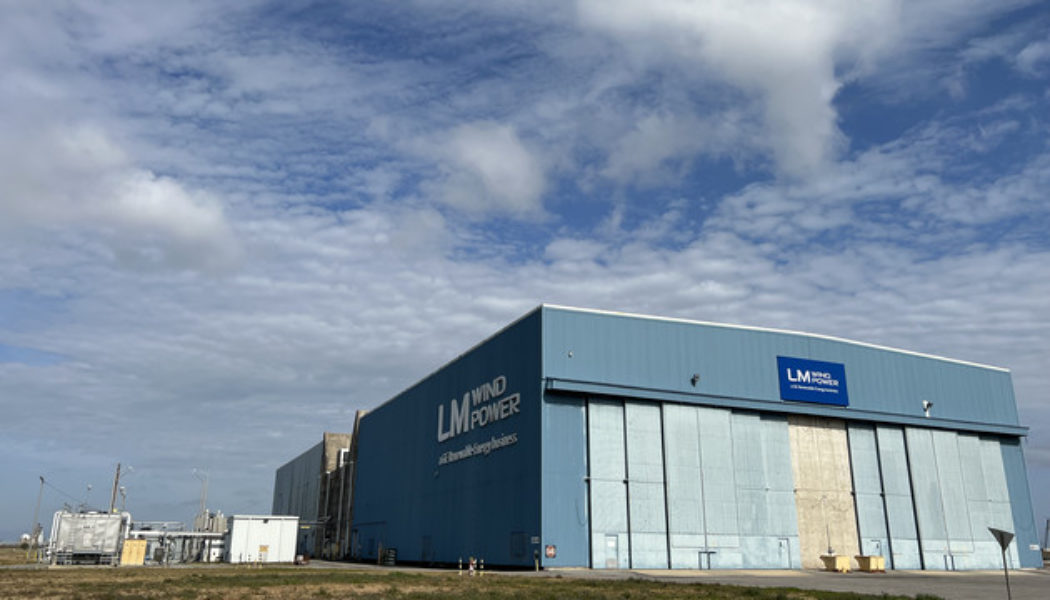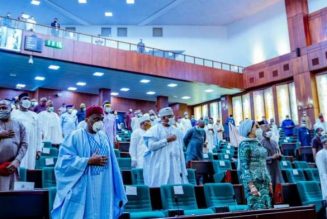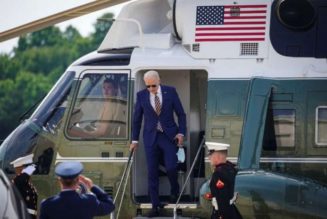“We still need alternative and renewable energy because [oil and gas] are a finite commodity,” Patterson said in an April interview. “We ain’t making anymore. Not fast enough anyway.”
Patterson, who calls himself a “drill, baby, drill” guy, added: “How long will the oil and gas last? I don’t know. Is it 50 years or 500 years? I don’t know. But at some point, it goes away.”
Patterson’s effort awarded two multimillion-dollar wind power leases off the Texas coast, but the projects never materialized after falling natural gas prices undermined their economics. Instead, the wind industry remained onshore to the vast open stretches of west Texas and the state’s Panhandle.
Challenges to potential Gulf wind projects persist, including the region’s frequent hurricanes and billions of migratory birds. The area’s typical wind speeds are also lower than those of the Atlantic Coast, the biggest haven for U.S. offshore wind projects.
But as East Coast states jockey to attract offshore wind developers and the jobs the new industry promises, Gulf proponents believe their region is ready to join the green push. The wind projects would help meet President Joe Biden’s goal of building 30 gigawatts of wind power capacity by 2030 — enough power for more than 10 million homes.
The federal agency tasked with planning and leasing offshore energy projects, the Interior Department’s Bureau of Ocean Energy Management, outlined a schedule last year for seven offshore wind auctions across the country by 2025 — including in the Gulf of Mexico, with Texas and Louisiana as the states with the region’s highest wind capacity.
The Gulf Coast also has another advantage, BOEM Director Amanda Lefton said: companies and workers with decades of experience in producing energy offshore.
“We have a really mature base for energy. We’ve got the know-how,” Lefton said. “The people, the companies, the manufacturers that know how to do [Outer Continental Shelf] energy development are in the Gulf of Mexico.”
Her agency is expected to complete a draft environmental assessment this summer on how leasing would affect the Gulf.
The wind projects will also offer a test for the Biden administration’s pledges to guide a “just transition” away from the fossil fuel industry and to create a unionized workforce to build the clean energy economy. It will give oil and gas workers an up-close look at the kind of “good-paying” jobs the administration has often promised.
“When workers hear ‘just transition,’ I think they hear ‘We’re having a fancy funeral,’” said Rick Levy, president of the Texas AFL-CIO labor union. But he said this moment in history offers an opening “to make sure that when we set these offshore wind and other technologies on their course, that workers are able to share in the benefits.”
A ready-made workforce
Though the Gulf’s waters haven’t sprouted any wind turbines yet, leaders in Louisiana and Texas note that their companies have been critical to the early offshore wind projects along the East Coast.
Take the nation’s first U.S. commercial offshore wind farm, the Block Island project off Rhode Island, which began commercial operation in 2016: Gulf Island Fabrication, a shipyard in Houma, La., built that project’s turbine foundations. New Orleans’ LM Wind Power did its blade testing and design, and the Gulf region’s Keystone Engineering designed its four-pile jacket substructures.
In Brownsville, Texas, the marine shipbuilding firm Keppel AmFELS is helping construct the first offshore wind turbine installation vessel that can comply with the Jones Act, which requires goods transported between ports be carried on U.S.-flagged ships. Houston-based NOV, formerly National Oilwell Varco, designed the vessel.
Hayes Framme, government relations manager for North America at Danish wind giant Ørsted, said the Gulf’s existing oil and gas infrastructure represents “a historic expertise.”
“That really provides an advantage for the Gulf of Mexico when you think about shaving the learning curve and the cost curve for deploying offshore wind,” Framme said.
Energy Secretary Jennifer Granholm visited the LM turbine facility on Tuesday, when she touted the role Louisiana can play in manufacturing and deploying offshore wind technology.
“We want to support the workers who have for 100 years powered this nation, and we want them to power this nation for the next 100 years while we power them with clean energy,” Granholm told reporters. “If we’ve learned anything from [Vladimir] Putin’s invasion of Ukraine and the volatility of the fossil fuel markets globally, it’s that ultimately we do want to transition to clean, home-grown American energy.”
The Gulf Coast’s long experience with oil and gas can also help make its offshore wind projects more cost effective.
“The welding, the servicing, the engineering — it’s all easily translatable,” said Michael Hecht, the president and CEO of Greater New Orleans, an economic development group representing the region.
Hecht said jobs in the Gulf’s traditional oil and gas industry have declined during the past decade, creating a sense of urgency to make a transition that allows people to retain their skills.
The U.S. will need more than 2,100 wind turbines, at least 2,100 foundations, more than 11,000 kilometers of cables and five wind turbine installation vessels to achieve its offshore wind energy target while cutting reliance on offshore wind components from Europe and Asia, the National Renewable Energy Laboratory said in a study released in March.
That’s where the Gulf of Mexico is particularly well situated, said Hecht. “The real sweet spot over time is not looking for gold but selling the shovels to the gold miners by being the supply chain for offshore wind, like we are for Block Island,” he added.
In a 2020 analysis, NREL examined the potential of a 600-megawatt offshore wind project in Texas’ Port Arthur with a commercial operation date of 2030. It found that such a project could support about 4,470 jobs and $445 million in gross domestic product during construction, and an ongoing 150 jobs and $14 million annually from operations and maintenance labor, materials and services.
A recent report from the American Clean Power Association also said an offshore wind lease auction in the Gulf could generate as much as $114.7 million in revenue.
“One of the things that makes the Gulf area attractive is the fact that you’ve got a workforce that is accustomed to working on rigs in the ocean,” said Dennis Arriola, the CEO of the renewable energy company Avangrid. “It’s not like you have to build an industry. What you have to do here is basically help an existing industry evolve.”
The hydrogen connection
Gulf wind projects would also provide new opportunities for producing hydrogen — a fuel whose demand is expected to surge amid the search for ways to reduce greenhouse gas emissions from industries such as long-haul trucking, fertilizer manufacturing and aviation.
The U.S. produces about 10 million metric tons of hydrogen each year, most of which is produced from natural gas. But wind could aid efforts to produce so-called green hydrogen, by providing the electricity needed to separate the hydrogen and oxygen molecules in water. The Gulf could use wind turbines to generate that power, then use its vast array of pipelines to move the hydrogen to where it’s needed.
“With the Gulf of Mexico being an oil and gas region, there’s a lot of talk about other potential technological opportunities,” said Erik Milito, president of the National Ocean Industries Association, which represents domestic offshore oil, gas and wind industries. “You could have situations where offshore wind plays a role in providing power generation for a project that is producing hydrogen. Because that region has infrastructure for oil and gas, you’ll have a lot of rights of way already in place.”
James Cotter, general manager of offshore wind in the Americas at Shell, said the offshore wind industry in the Gulf would start from day one with an eye toward integrating other technologies.
“I don’t think you’ll see offshore wind farms that are ‘just an offshore wind farm plugged into the grid, thank you very much,’” he said. “I think what you’re seeing in the Gulf of Mexico is a blend of technologies.”
Louisiana, Oklahoma and Arkansas announced in March that they intend to apply as a unit for funding from last year’s bipartisan infrastructure law to establish a regional clean hydrogen hub. Congress included $8 billion in the bill for at least four new hydrogen hubs around the country to expand the use of clean hydrogen in the industrial sector.
As part of the states’ announcement, they highlighted the ready availability of hydrogen for demonstration in the region and the existing pipeline infrastructure that runs from Oklahoma through Arkansas to the Gulf.
Hecht, from Greater New Orleans, said the states hope to use the infrastructure money to “begin the case of green hydrogen,” while lowering the cost per kilogram. “We have this massive customer base that can pay for green hydrogen at scale, which will help bring down the per unit cost,” he said.
“There has been a ton of innovation in energy development in the Gulf states over the last decade,” Hecht added. “This is, in my mind, the next frontier — the next emerging market that we can all look toward.”
Offshore obstacles
A more daunting roadblock could be economics: Offshore wind projects are costly, which could prove most problematic for a state like Louisiana where electricity prices are low compared with the East Coast.
“In the Northeast, they have higher electricity rates, so they bring on expensive wind-generated electricity, and it doesn’t bump the rates as much,” said Republican Louisiana Sen. Bill Cassidy.
The state is an industrial base, which has created “pretty low electricity rates,” Cassidy added. “That would change should we begin to rely heavily upon offshore wind.”
Already, other states are contending with the high price tags associated with offshore wind development. The Virginia attorney general’s office recently warned that a proposed offshore wind farm off its coast would have capital costs about two to three times the cost of solar resources and pose “significant risks” to customers.
The 2020 NREL study indicated that offshore wind projects in certain areas of the Gulf of Mexico could achieve economic viability after 2030.
Still, wind projects in much of the Atlantic Coast have purchase agreements in place with power customers — something the Gulf Coast is still working on.
A lease sale in the New York Bight earlier this year — the first offshore wind leases that the Biden administration offered — raked in more than $4 billion, shattering records. The leases will help meet New York state’s mandated target of 9 gigawatts of offshore wind power by 2035 and New Jersey’s target of 7.5 gigawatts of offshore wind by the same year.
In Louisiana, Democratic Gov. John Bel Edwards has set a goal of adding 5 gigawatts of offshore wind by 2035. Edwards also launched a task force last year to coordinate commercial wind leasing proposals in federal waters off Louisiana’s coast.
“What makes Louisiana’s plan special, and the most attainable in my opinion, is that instead of working against oil and gas companies, we are working with them,” Edwards said in his March State of the State address. “In this state, that will look like offshore oil platforms and wind turbines side by side.”
Texas, however, is not pursuing offshore wind to the same extent, which is a hurdle for the industry, said Luke Metzger, the executive director of the environmental advocacy group Environment Texas. That’s even though a recent report from the group’s Research and Policy Center found that offshore wind could provide Texas with 166 percent of its electricity needs.
The Electric Reliability Council of Texas, which operates Texas’ electrical grid, declined a request for an interview but said it does not choose or recommend sites for generation resources, which are instead decisions made by individual companies.
Entergy — the New Orleans-based energy company that distributes electricity across Arkansas, Louisiana, Mississippi and Texas — also hasn’t announced any commitments to buy wind power from the Gulf.
“Right now, solar is more cost competitive for customers and available in our system,” said Elizabeth Adams, vice president of Entergy’s enterprise planning. “But we do see wind and we are evaluating offshore wind as part of that wind portfolio, as an important part of a diverse portfolio as we get a decade or so out.”
She added that government support — including specific targets or tax incentives for certain technologies — can affect the cost for customers and allow Entergy to accelerate adding various technologies.
James Martin, the CEO of Gulf Wind Technology, a Louisiana-based company focused on improving the economics of wind farms, said he sometimes worries about whether offshore wind in the U.S. will receive adequate research and worker training money.
But even the challenges facing offshore wind present an opportunity to work closely with the oil and gas sector, he added.
“These are all really important for the oil and gas workforce to see and actually demystify wind because there’s a lot of feeling that it’s trying to replace oil and gas,” he said. “And it absolutely isn’t. It’s just another energy source.”
[flexi-common-toolbar] [flexi-form class=”flexi_form_style” title=”Submit to Flexi” name=”my_form” ajax=”true”][flexi-form-tag type=”post_title” class=”fl-input” title=”Title” value=”” required=”true”][flexi-form-tag type=”category” title=”Select category”][flexi-form-tag type=”tag” title=”Insert tag”][flexi-form-tag type=”article” class=”fl-textarea” title=”Description” ][flexi-form-tag type=”file” title=”Select file” required=”true”][flexi-form-tag type=”submit” name=”submit” value=”Submit Now”] [/flexi-form]









